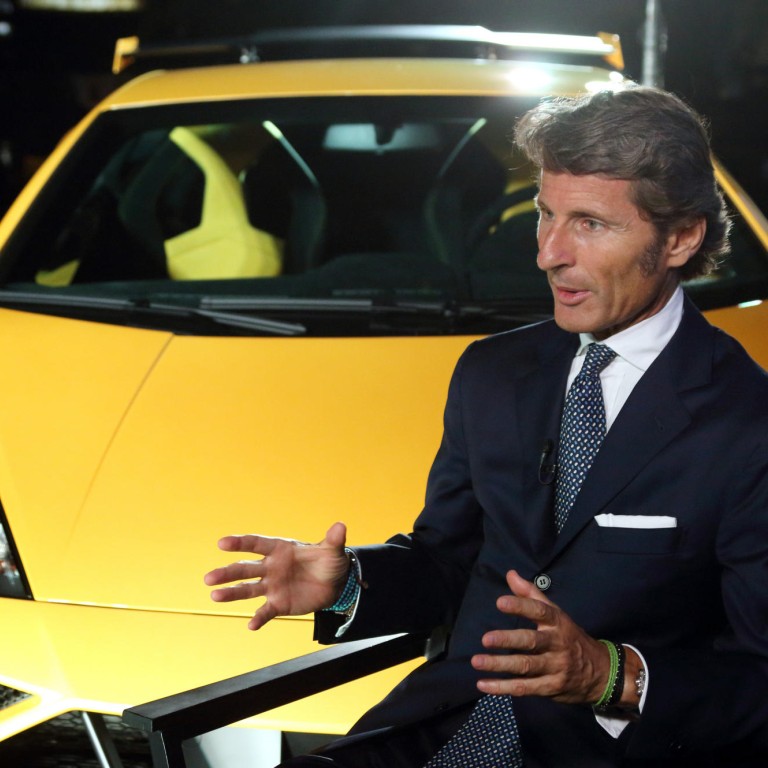
US back in fast lane for luxury cars
With demand on the mainland waning, super-rich Americans are splashing out again, along with their Japanese peers
After years of profiting from the mainland's appetite for high-priced toys, makers of hyper-luxury cars are shifting their focus back to more traditional markets such as the US and Japan.

American demand for Lamborghini's US$400,000-plus Aventador flagship was growing at a pace reminiscent of the years before the 2008 global financial crisis, Winkelmann said. And as Japanese Prime Minister Shinzo Abe kick-started the economy, Japan also stood out, he said.
Concerns about the mainland, echoed by Ferrari and Rolls-Royce since last year, show it is no longer the driver of growth it was three years ago when it pulled the world out of recession. A slowing economy and a government push against lavish spending have undermined sales of luxury goods ranging from supercars to Prada bags and Bordeaux wines.
"Luxury carmakers are suffering, and a lot of high-class restaurants that serve expensive dinners are suffering, too," said Andreas Graef, a consultant at AT Kearney in Shanghai. "Clearly China's millionaires and billionaires are more cautious of how they show off their wealth, from expensive watches to expensive liquors."
The United States was the strongest market globally, and mainland demand for luxury cars was unlikely to ever experience the kind of expansion it saw over the past several years, Graef said.
After dropping 29 per cent in 2009 to 2,500 units, sales of vehicles costing more than two million yuan (HK$2.5 million) surged to a record 9,000 in 2011 before dropping back to 8,000 last year, according to AT Kearney.
"All luxury consumption has been squeezed," said Zhu Bin, senior analyst at researcher LMC Automotive in Shanghai. "Until 2015, the luxury-car segment won't recover to the levels we saw in 2012."
Mainlanders were the world's biggest buyers of luxury goods last year, accounting for 27 per cent of sales, according to a McKinsey report in December. But mainland luxury sales growth may slow to 12 per cent annually in the three years to 2015 from an average of 27 per cent between 2008 and 2012, it said.
Analysts expect the mainland's gross domestic product will grow by 7.6 per cent this year, the weakest pace in 14 years. That is taking a toll on the super-rich, with the number of mainlanders with at least US$30 million shrinking 5.1 per cent this year to 10,675, according to the Wealth-X and UBS World Ultra Wealth Report. Globally, the population of "ultra-high-net-worth individuals" rose 6.3 per cent and their wealth expanded 7.7 per cent to US$27.8 trillion this year, according to the report.
Then there is the austerity drive being pushed by the Communist Party. Since last year, President Xi Jinping has limited official spending on high-end banquets and lavish gifts, resulting in a slide in demand for products such as liquor, hand-made tea and French wines. Xi has warned that disgust over graft and the enrichment of cadres and their families threatens the party.
"In the past, there were many super tycoons who wanted to show off their wealth," said Yale Zhang, managing director of consultancy Autoforesight Shanghai. These days, such people "want to control their budget". While it is typically the scions of such families who go after Lamborghinis or Ferraris, "their budget can be easily controlled by daddy", Zhang said.
Lamborghini is not alone among ultra-luxury carmakers seeing a slowdown. Rolls-Royce chief executive Torsten Mueller-Oetvoes said in April he was no longer seeing "explosive" growth on the mainland, but was still optimistic. The US overtook the mainland as the brand's biggest market last year, when the maker of the US$380,000 Phantom sold a record 3,575 cars globally.
Ferrari says its North American sales grew 9 per cent in the first half of the year, while Japanese deliveries were up 28 per cent. In Greater China, by contrast, it sold some 350 cars - 50 fewer than a year earlier.
With Europe still struggling, the US has been a standout for Lamborghini. Deliveries there jumped 29 per cent in the first eight months of the year, outpacing the broader car market's 9.6 per cent gain, according to research firm Autodata.
In Japan, customers wanting to buy the scissor-doored Aventador must wait 12 months, and Lamborghini's sales gained 14 per cent in the first eight months of the year, according to the Japan Automobile Importers Association.
"We are very happy with Japan," Winkelmann said. "It's coming back big time."

